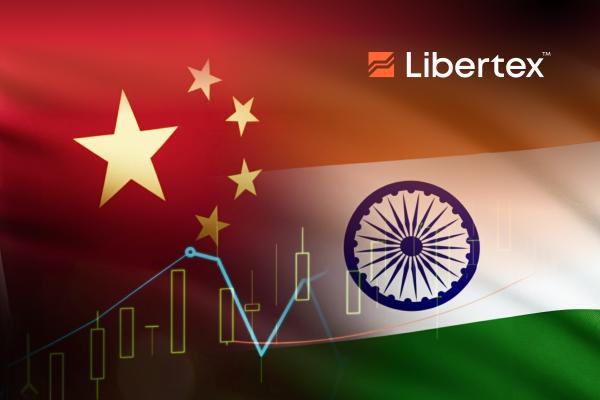With all the commotion surrounding Donald Trump's inauguration and his recent threats against near neighbours Canada and Mexico, a host of other Latin American countries, and even Greenland and its mere 50,000 inhabitants, it appeared as though big fish China and India might have managed to evade the new president's ire. However, any optimism the BRICS powerhouses might have had was swiftly dashed this week as The Donald vowed to impose tough tariffs on these and any other nations that "harm" the US economy. Just as the Year of the Snake celebrations begin, Beijing's politicians could be in for quite the hangover on their return to work next week. Meanwhile, the already ailing Indian economy could be hit particularly hard by the new America-first policy just as it was hoping to turn a corner.
China's largest cap stocks rose more than 15% on average in the first month of 2025 as both international and domestic capital poured in. After years of solid growth, Indian equities dipped over Q3-4 2024 but now seem to have plateaued in Q1 2025. Valuations are high in India, and growth prospects are similarly strong. In China, on the other hand, major tech stocks are at unbelievably low P/E ratios. The question is, how hard will the tariffs be, and which industries will suffer most? In this article, we'll look at the major factors likely to affect Asian stocks and discuss how they might respond both to these and Trump's tariffs.
How much?!
Trump has been characteristically enigmatic about the extent of potential tariffs on China and India. Figures of 10%, 25%, 60%, and even 100% have been thrown around at various times by the new US president. It's now believed that from Saturday (01/02), 10% tariffs will be introduced. However, in typical Trump fashion, this could be just the beginning. Thankfully, the BRICS nations are much more prepared for a trade war than they were during Trump's first term. If the recent DeepSeek fiasco has proven anything, it's that China is able to do much more with much less than was initially thought. Through its more efficient use of memory, the Chinese AI platform has outperformed both OpenAI and ChatGPT using only now outdated, pre-embargo Nvidia A100 chips.
Of course, reduced trade to the US will cost the Chinese a significant amount of export revenue, but it now looks as if the Chinese are not as reliant on US tech as they might have first seemed. India, too, has developed its external trade with the rest of the world to become less reliant on the US. With both countries' economies becoming increasingly service-based and tech-focused and less reliant on raw materials and manufactured goods, the impact of tariffs will be less pronounced. Of course, there will likely be short-term impacts on both countries' stock markets in the event of a bombastic 30% or higher tariff imposition, but this is likely to be short-lived if the recent Latin American saga is anything to go by.
Good value
Despite the recent jump in the last month or so, Chinese stocks have been languishing relative to their US counterparts since the pandemic at least. Before that, there was the Trump ban on ADRs and internal tech crackdowns by the CCP. As a result, Alibaba, Baidu and Tencent are all at multi-year lows of HK$ 88.30, HK$ 87.80 and HK$ 401.20, and their respective P/E ratios are 18.9, 11.2 and 21.1. These are obviously shockingly low valuations for tech firms dubbed the Chinese versions of Amazon, Google and Apple. Now that there is some stability on the Hong Kong front, and all of these major names are established listings on the Hang Seng, there is little stopping external capital from taking advantage of these appealing prices.
Closer to home, the Chinese authorities are to direct state-owned insurance funds to increase shareholdings of local A-shares, thus boosting their lagging stock market. It has also unveiled a slew of measures to boost investor confidence, including swap and re-lending schemes for stock purchases totalling RMB 8 billion. Indian stocks have taken a slightly different path, but they still represent good value for money at current prices. Tech giants Wipro and Infosys both still have P/E ratios below 30 and are yet to retake their 2022 highs. What's more, both pay dividends above 2% and are largely insulated from traditional tariff measures. Even in the event of harsh tariffs, there will still be good deals to be had in both India and China and domestic stimulus will help to feed demand both locally and abroad.
Trade CFDs on China and more with Libertex
Libertex boasts an impressively diverse CFD offering that includes China-focused indices like the China A50 Index (XU) and the Hang Seng Index (HIS) and some of Asia's largest cap firms, including Tencent, Baidu, and Alibaba. For more information about our products and services, visit www.libertex.com today!


